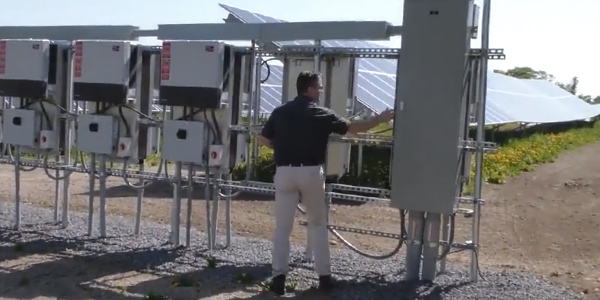NYISO on Tuesday proposed updating its buyer-side mitigation (BSM) processes in order to compensate for the growing disconnect between the original design, intended to cover a few new resources in any given class year, and the up to 50 such resources to be evaluated currently.
The ISO’s BSM rules are designed to prevent uneconomic entry of subsidized resources into its markets. It expects the number of resources needing to be studied under the rules to increase by five to 10 times the historical norm, while the two-year period formerly allowed for these evaluations has halved, Shaun Johnson, director of market mitigation and analysis, told the Installed Capacity Working Group (ICAPWG).
“We’re adding several other BSM evaluations, which could result in at least four to six BSM studies per year, certainly for 2021,” Johnson said. “We’re in the process of wrapping up the studies for Class Year 19, hopefully very soon. … So, just in the next six months, we could be looking at an additional four to six studies.”
Until recently, staff usually performed the BSM process on about five resources over the course of a class year. CY17 had about seven resources evaluated for BSM, Johnson said. CY19 had more than 50 resources at the start of the study.
“The current processes were not designed to be able to be administered effectively under this expected work load,” Johnson said.
Input Assumptions
“This initiative will not discuss new BSM designs or exemptions to BSM; there is a separate process underway with the ISO, the Comprehensive Mitigation Review,” Johnson said. “We’re all really uncomfortable right now about the risks that the BSM process in particular can add to the delays of the class year timeline.”
Those delays could stem from determining the assumptions that go into energy and capacity price forecasts, which determine whether new market entrants are subject to certain exemptions. Part A exempts a new resource from BSM if the forecast of capacity prices in its first year of operation is higher than the default offer floor. Part B permits exemptions if the forecast of capacity prices in the first three years is higher than the resource’s net cost of new entry.
NYISO has appealed NYISO Appeals FERC Rejection of BSM Proposal.)
“When you have four or five resources that you’re looking at, you can iterate and say, ‘if this one’s out, this is the effect it’s going to have’” on prices. “But when you have 30, 40, 50 resources, you just can’t iterate like that,” Johnson said. “The time it would take to do that is inconceivable, particularly when we get down to the [installed reserve margin] and [locational capacity requirement] values.”
NYISO wants stakeholders to consider the timing and lockdown of input assumptions, such as whether it should allow for discussion of the inputs with stakeholders, or post rough assumptions well in advance, Johnson said.
One stakeholder urged the ISO to balance the need for market fairness with the desire for administrative efficiency, urging staff not to avoid extra calculations if they are needed.
Tariff Clarity
NYISO also wants to add language to clarify how the limit on exemptions for renewables is calculated, as the tariff often can be unclear, Johnson said. The ISO had wanted to limit renewable exemptions in a class year to 1,000 MW of installed capacity, but FERC rejected that. It later accepted a proposal to use an unforced capacity reserve margin impact component in the renewable exemption limit formula. (See NYISO BSM Mitigation Ruling Sparks Glick Rebuke.)
“This was the first time we applied the renewable exemption limit that we just filed and got approved … and we realized as we’re administering the provisions that were written that some of them we didn’t write well,” Johnson said. “Others are not consistent with what we presented to stakeholders; they are consistent with what we described in the filing, but we do want to circle back on those components and discuss with stakeholders whether we want to update and clarify this or not.”
The ISO also wants to revise language addressing the inclusion of units, supply stack inclusion rules and inflation rate terminology, he said.
NYISO is requesting feedback by Jan. 27 in order for stakeholder comments to be included in any specific enhancement proposals Johnson plans to make, ideally, at the Feb. 9 and Feb. 25 ICAPWG meetings.
Regardless of changes in the composition of FERC under the incoming Biden administration, the next steps are to develop a proposal in time for the Business Issues and Management Committees to consider at their April meetings, Johnson said.




